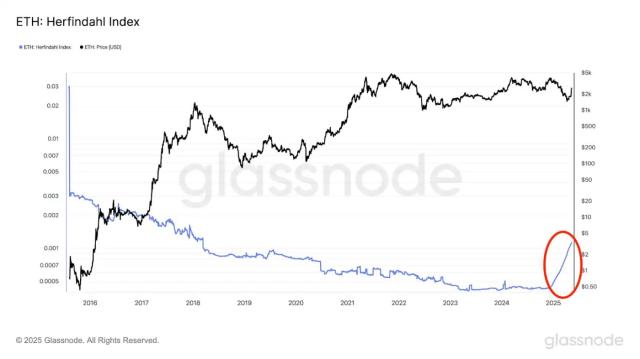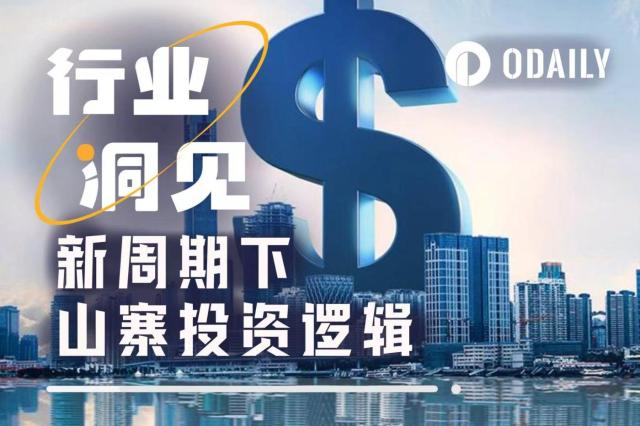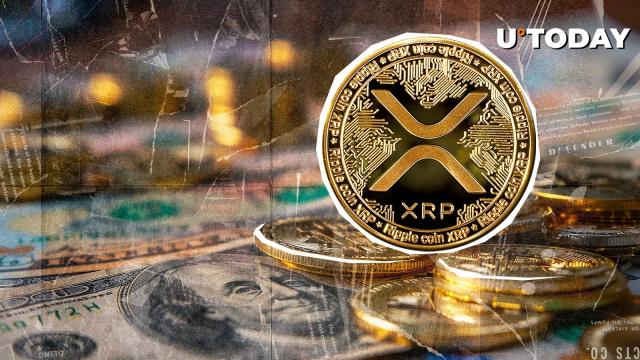Written by: Luozhou Finance
With Circle seeking listing and Pump.fun launching tokens on-chain.
In the past week, the most anticipated TGE in the market undoubtedly belongs to Pump.fun. This token launch event began in June, continuously fermenting amid expectations and criticisms, until July 12, when the token was finally issued. Despite ongoing market doubts about its $4 billion valuation, the data shows investors' clear stance, with the public offering selling out in just 12 minutes, even causing some investors to curse on social media for missing out.
For now, Pump.fun has delivered a relatively satisfactory answer. After launch, the price stabilized and rose, and today, Pump.fun achieved its first token buyback using transaction fees. However, whether the token price can be maintained remains questionable in many people's minds.
Regarding the application king of this bull market, Pump.fun is certainly among the top. Without exaggeration, Pump.fun's emergence successfully brought MEME to new heights. Its fair launch concept and convenient operation completely broke traditional issuance barriers, with the temptation of creating a token for just $3, which still holds high appeal even in today's declining MEME market.
From its mechanism, there's no pre-sale or private placement, with pricing entirely through smart contracts, and even a graduation mechanism that automatically creates a liquidity pool on DEX when market value reaches $69,000. This almost fully automated token listing process is widely welcomed by the market, making Pump.fun the most powerful money-printing machine in this market cycle.
Since launching in January 2024, Pump.fun has issued a total of 11.44 million tokens, with over 22 million usage addresses, achieving cumulative revenue of nearly $720 million. The highest single-day transaction fee reached $5.43 million, with a single-day revenue peak of an astonishing $15.88 million. It can be basically concluded that this round of MEME market dividends have been entirely captured by Pump.fun, further driving Solana ecosystem development.
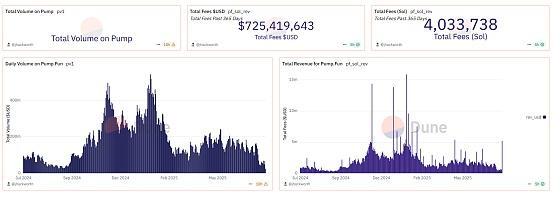
This MEME-originated project suddenly planning to issue tokens sparked widespread market discussion. Pump.fun's token issuance rumors began in February, when Wu Blockchain revealed that Pump.fun planned to list on centralized exchanges, even preparing complete token issuance documents, but was later abandoned due to Trump family's frequent MEME causing liquidity drought. In June, token issuance rumors resurged, with Blockworks citing multiple sources reporting Pump.fun's plan to raise $1 billion through token sales, valuing at $4 billion, with tokens to be sold to public and private investors.
On July 10, Pump.fun finally announced launching its native token PUMP public sale on July 12, 2025, at 22:00, with PUMP airdrop imminent. They will issue 150 billion tokens at 0.004 USDT each, representing 15% of total supply (1 trillion tokens). At a $4 billion valuation, raising $600 million. Due to compliance reasons, UK and US participants are excluded. In PUMP tokenomics, 33% for public sale, 24% for community and ecosystem incentives, 20% to team, 2.4% to ecosystem fund, 2% to foundation, 13% to existing investors, 3% for livestreaming, 2.6% for liquidity and exchanges.
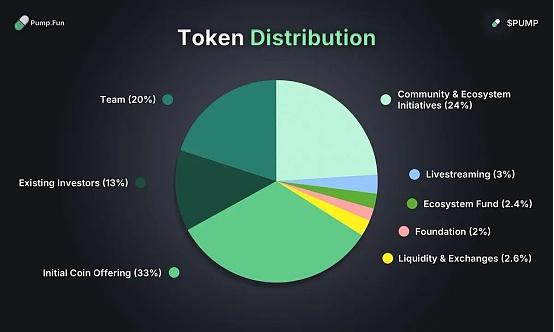
Compared to previous token launch expectations, the market collectively criticized the actual launch. Controversies focused on the $4 billion valuation. Consider that Circle, the first stablecoin stock to ring the NYSE bell, is valued only at $7 billion. If even the established player is valued so, a so-called on-chain casino claiming a $4 billion valuation, even exceeding most current DeFi blue-chip protocols, makes the market directly question liquidity overdraft.
More critically, times have changed. From the market perspective, most altcoins and MEME coins in the crypto are mostly in a downturn except for the past two days of dragon rising. This can be glimpsed from trading volume. According to Dune, after reaching a peak of $5.44 million on January 23, 2025, Pump.fun's trading volume has basically shown a cliff-like decline, with recent daily trading volume stabilizing within $700,000, an 87.2% drop from its peak. Token creation has dropped from a peak of 70,000 to 30,000, nearly halved. The token graduation rate is surprisingly low, from 1.6% in 2024 to less than 1% now. This clearly shows the diminishing benefit effect, the MEME market turning "cold", and user enthusiasm rapidly fading. However impressive Pump.fun is, it's merely a tool dependent on MEME market heat, which also raises market doubts about its valuation.
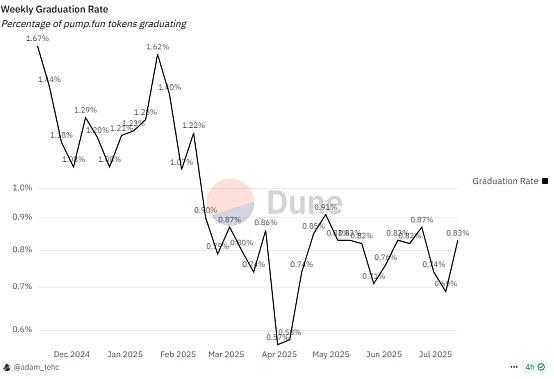
On the other hand, while the market shrinks, competitors are rising. Pump.fun, once unrivaled in the market, has recently faced pressure. Recently, letsbonk.fun, centered on BONK, has developed rapidly, multiple times occupying the top spot in token launch numbers, surpassing Pump.fun in market share. Although Pump.fun quickly counterattacked, the competition remains intense, and it must be acknowledged that Pump.fun's top position is threatened.
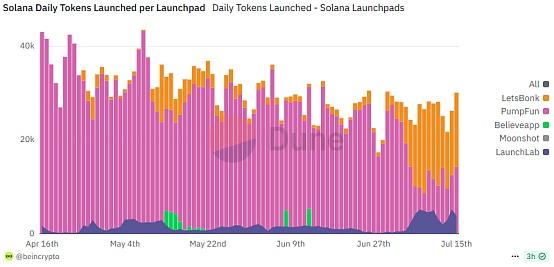
For these reasons, Pump.fun's $4 billion valuation faces severe questioning. After the June token issuance rumor, it triggered market risk aversion, with popular MEME coins in the Solana ecosystem widely adjusting, and funds quickly flowing out. IOSG Ventures partner jocy even directly stated that this ICO is more like a liquidity exit than a long-term development plan. Crypto researcher @rezxbt pointed out that Pump.fun is staging a complete "harvesting operation".
Interestingly, in March 2024, Pump.fun co-founder alon had stated on social media that every pre-sale is a scam. Coincidentally, Pump.fun is now issuing tokens precisely through a pre-sale, ironically contradicting his previous statement. Token issuance raises 33% of total supply, with 18% in private placement for institutions and 15% in public offering. All tokens will be fully unlocked on the first day of listing.
From the final result, while industry professionals are skeptical, supporters and institutions apparently think differently. From the public offering, PUMP tokens completed the $500 million quota in just 12 minutes, with 6 major exchanges including Kraken, Bitget, and Bybit participating. According to Dune panel data, 23,959 wallet addresses completed KYC on Pump.fun's official website, with 10,145 successfully purchasing, averaging $44,209 per purchase. 89.7% of PUMP token pre-sale was completed through the official website, with CEXs accounting for only 10.3%. Among official pre-sale addresses, small-amount users are the main group, with 5,758 users purchasing PUMP under $1,000, while 202 addresses purchased over $1 million, showing institutional enthusiasm.
The entire process perfectly illustrated the crypto market's unique contradiction. Due to technical issues during exchange public sales causing user purchase difficulties, multiple users expressed dissatisfaction on social media. At the time, the community generated significant controversy about Pump's subsequent performance - one side believing the valuation is too high and will collapse after the spotlight effect, the other believing Pump, as the most representative MEME product, has a complete revenue logic and cognitive foundation, and won't easily fail.
From the current perspective, the latter seems to have temporarily gained victory. After launching GMGN on July 15, Pump briefly dropped from $0.0065 to $0.0042, but after oscillating, it started an upward trend, currently reporting at $0.0066, rising 55% compared to the fundraising price of $0.0040, with FDV price increasing from $4 billion to $6.6 billion, bringing certain wealth effects to subscribers.

Of course, this price increase also has performative elements. According to @EmberCN's on-chain analysis, by 8 AM this morning, pump.fun began repurchasing PUMP with transaction fee income. In the past 7 hours, it transferred 187,770 SOL of transaction fees to the 3vkp...3WTi address, purchased PUMP, and then transferred the bought tokens to the G8Cc...kqjm address for storage. Currently, it has used 111,953 SOL (approximately $1.83 million) to buy 3.04 billion PUMP tokens, with an average price of $0.006. Repurchasing can support the price, but it also cannot escape the suspicion of moving money from one hand to another. However, for holders, regardless of the purpose, as long as the price is pulled up, it is ultimately a good thing.
Whether exiting liquidity or simply building for the benefit, the valuation controversy of Pump.fun reflects the current market status. The once-liquid MEME is collectively entering difficulties, and the explosive attention economy seems to gradually become a false proposition. At this point, even the most representative applications are embarking on token issuance, subtly revealing signals of narrative ending. Where MEME will ultimately go, the token Pump will be a weathervane, and the market's bet on it will be an effective observation of the value judgment of the attention economy. Token price increase at least represents market recognition of its pricing, while token decline will prompt people to consider the true essence of the MEME market, potentially generating more selling emotions. This might also be one of the reasons for Pump's repurchase.
Returning to the title's question, who exactly profited from Pump.fun's token issuance? Undoubtedly, the project team profited, and public and private sale participants have also profited so far, as have short-term long investors. However, how long they can profit and to what extent the project can maintain the token price remains a big question mark. Some whales have started to secure their gains. According to Lookonchain, one whale 8a5nSU spent 5 million USDC through 5 wallets to participate in PUMP public sale, purchasing 1.25 billion PUMP tokens, and sold everything today at an average price of $0.0067, making a profit of $3.416 million.
On the other hand, the current macroeconomic market improvement will also influence MEME to some extent. Ethereum's narrative is strong, with mainstream tokens led by Ethereum continuously rising, directly resulting in the outbreak of Ethereum blue-chip Altcoins. Taking ENS as an example, it rose over 18% today, creating a new high since February this year. In the long term, even with current market uncertainty, predictable interest rate cuts are on the way, and the Altcoin market might welcome a small peak. MEME will more likely show a bipolar trend, with quality MEME rising with sector rotation, while remaining MEME liquidity gets absorbed, with most becoming neglected.
If following this path, MEME, similar in nature to lipstick and lottery economies, will continue to exist but will find it difficult to stir up the monetary tide like in 2024.




